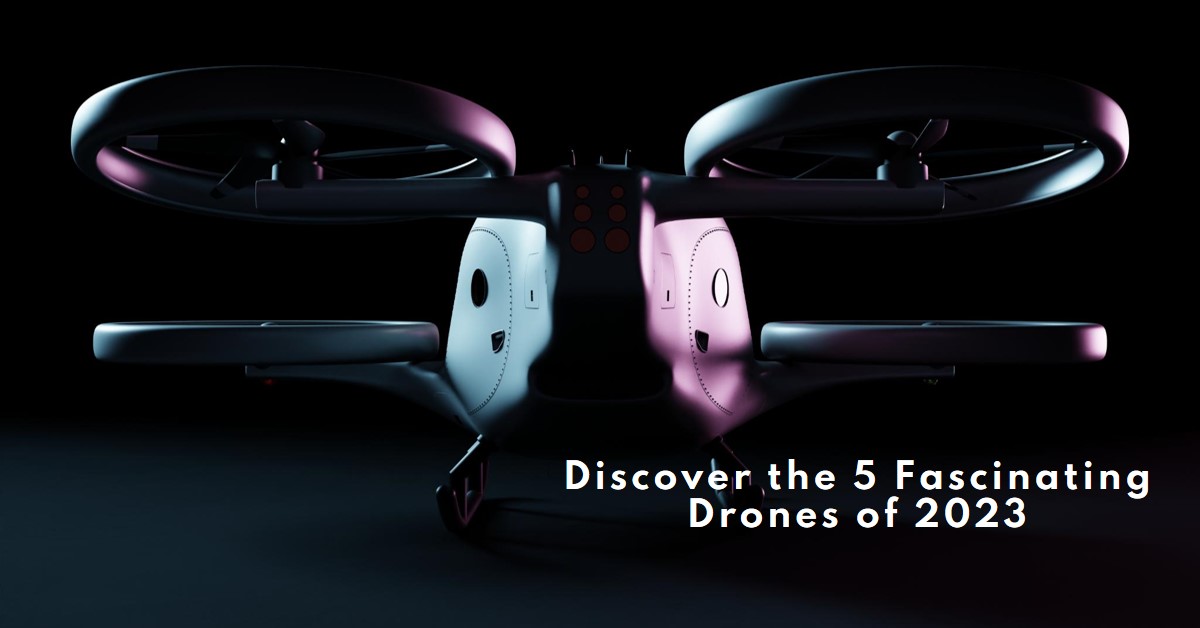I. Introduction
Drones, originally synonymous with military applications, have undergone a remarkable transformation, emerging as versatile tools with widespread applications across various sectors. As we step into 2023, the drone landscape continues to expand, unveiling five intriguing types that showcase the pinnacle of technological innovation and application diversity.
In a world increasingly shaped by technological advancements, drones have emerged as a transformative force. These unmanned aerial vehicles, once exclusively associated with military operations, have transcended those boundaries, infiltrating consumer markets, industries, and even recreational activities. Their ability to capture breathtaking aerial views, conduct surveillance, and deliver packages has made them indispensable in various aspects of our lives. In this article, we will delve into the five fascinating types of drones that are making waves in 2023.
II. Classification of Drones
A. Consumer Drones
Consumer drones, designed for personal use, have experienced an exponential rise in popularity. From affordable models tailored for hobbyists to high-end drones equipped with advanced cameras, these consumer-centric devices have democratized aerial photography and videography. Leading the charge are models like the DJI Mavic series and Autel Robotics EVO Lite+, which have become synonymous with innovation and accessibility.
B. Commercial Drones

The commercial sector has embraced drones for a multitude of applications, ranging from agriculture to construction. Equipped with specialized sensors and cameras, these drones play pivotal roles in tasks such as crop monitoring, site surveys, and infrastructure inspection. Companies like senseFly and Kespry are at the forefront of this drone revolution, pushing the boundaries of what these unmanned aircraft can achieve in professional settings.
C. Military Drones

Military drones, continually evolving, have become integral components of modern defense strategies. These unmanned systems, armed with sophisticated surveillance and weaponry, redefine aerial warfare. Notable examples include the Predator and Reaper drones, showcasing the cutting edge of military technology and the substantial impact drones have on global security.
D. Racing Drones
Drone racing has emerged as a thrilling sport, captivating enthusiasts globally. Racing drones are designed for high performance, featuring lightweight frames and powerful motors. The Drone Racing League (DRL) has become a global platform for showcasing the prowess of these nimble machines, attracting audiences and pushing the limits of what these devices can achieve in a competitive setting.
E. Delivery Drones
The concept of drone delivery has transitioned from futuristic speculation to practical experimentation. Companies like Amazon and UPS are at the forefront of this innovative approach, aiming to revolutionize traditional logistics by using drones for the swift and efficient transportation of goods. While still in its early stages, the potential impact of delivery drones on the e-commerce and logistics industries is undeniable.
III. Technological Advancements
A. AI Integration
One of the most significant advancements in drone technology is the integration of artificial intelligence (AI). AI algorithms enable drones to autonomously navigate, avoid obstacles, and analyze data in real-time. Drones like the Skydio 2 showcase the potential of AI-driven autonomy, enhancing their capabilities and expanding the scope of their applications in various fields.
B. Improved Battery Technology
A persistent challenge in drone technology has been the limitation of battery life. However, recent breakthroughs in battery technology, including advancements in lithium-sulfur batteries and fuel cells, promise longer flight times and increased operational efficiency. These improvements address a critical aspect of drone usability, making them more practical for a broader range of applications.
IV. Regulatory Challenges
Despite their potential, drones face regulatory challenges globally. Striking a delicate balance between innovation and safety, regulatory frameworks govern drone usage. Understanding and navigating these regulations are crucial for drone operators to ensure responsible and lawful use. The impact of regulations on drone adoption varies across regions, presenting both opportunities and challenges for the industry.
V. Future Prospects
The future of drones holds exciting possibilities. Anticipated developments include swarming technology, where multiple drones collaborate seamlessly to perform complex tasks. Additionally, drones are expected to find expanded applications in fields like healthcare, environmental monitoring, and disaster response. As technology continues to evolve, so too will the capabilities and versatility of drones, opening new avenues for their integration into various aspects of our lives.
VI. Conclusion
As we unveil the five fascinating types of drones in 2023, it becomes evident that these unmanned aerial vehicles have transcended their initial military roots. Consumer, commercial, military, racing, and delivery drones collectively showcase the dynamic and innovative nature of the drone industry. The impact of technological advancements, coupled with the diverse applications across different sectors, paints a promising picture for the continued growth and integration of drones into our daily lives.
VII. FAQs
A. What are the primary uses of consumer drones?
A. What are the primary uses of consumer drones?
Consumer drones find applications in aerial photography, videography, and recreational activities. They are widely used for capturing stunning visuals from unique perspectives, making them popular among hobbyists and enthusiasts.
How do military drones differ from other types?
B. How do military drones differ from other types?
Military drones are specifically designed for defense purposes, often equipped with advanced surveillance and weaponry. They play a crucial role in modern warfare, providing intelligence, surveillance, reconnaissance, and, in some cases, conducting targeted strikes with precision.
Are delivery drones practical for everyday use?
While still in the experimental phase, delivery drones hold the potential to revolutionize logistics. Their practicality depends on overcoming regulatory challenges, ensuring safety, and addressing operational considerations to make them a viable option for everyday use.
What challenges do drone regulations pose?
Drone regulations aim to ensure safety, privacy, and responsible use. However, navigating these regulations can be challenging for operators, requiring a thorough understanding of local and international laws to avoid legal complications.
Which technological advancements are expected in the drone industry?
The drone industry is poised for advancements in swarming technology, AI integration, and improved battery efficiency. These innovations will further expand the capabilities and applications of drones, shaping the future of this dynamic and rapidly evolving industry.

